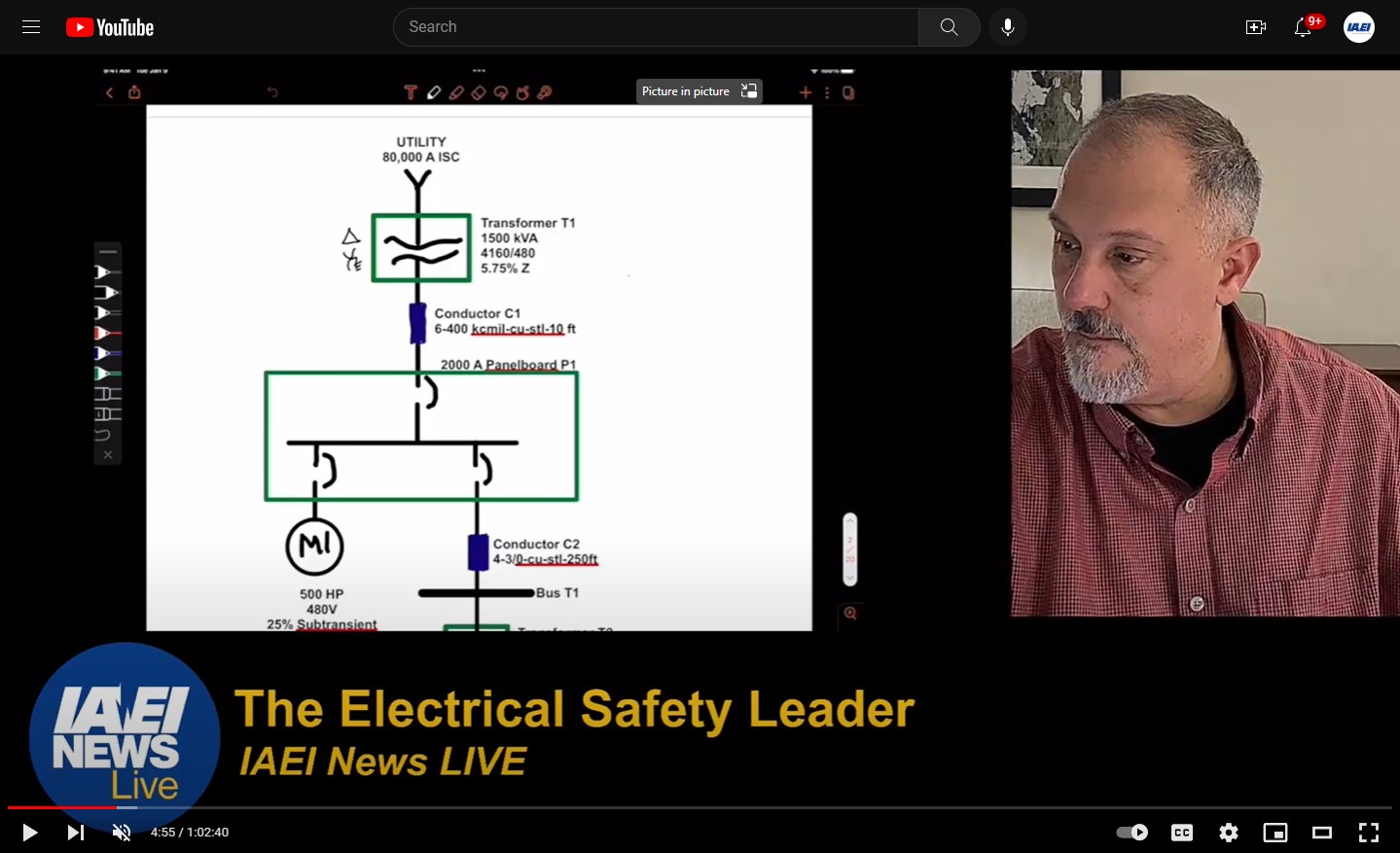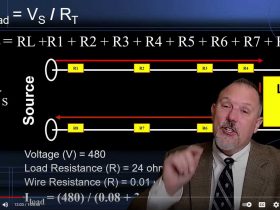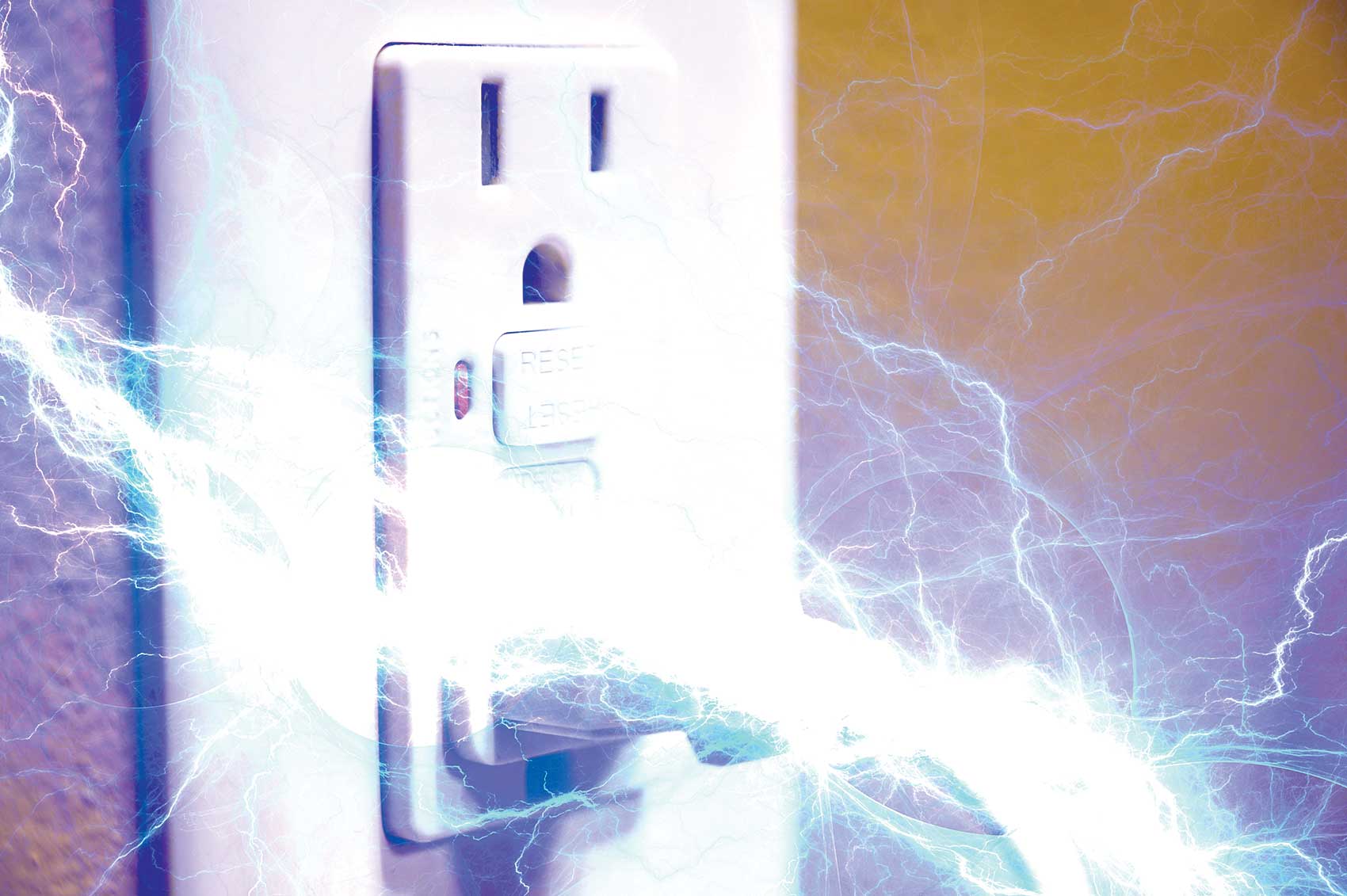The new 110.24 requires service equipment to be marked with the maximum available fault current and if this service is updated or modified, the maximum available fault current would need to be updated as well.
NEC 110.24(A) states: “Field Marking. Service equipment in other than dwelling units shall be legibly marked in the field with the maximum available fault current. The field marking(s) shall include the date the fault current calculation was performed and be of sufficient durability to withstand the environment involved. ”
NEC 110.24(B) states: “When modifications to the electrical installation occur that affect the maximum available fault current at the service, the maximum available fault current shall be verified or recalculated as necessary to ensure the service equipment ratings are sufficient for the maximum available fault current at the line terminals of the equipment. The required field marking(s) in 110.24(A) shall be adjusted to reflect the new level of maximum available fault current.” The text of 110.24(B) is crafted very well; it implies the equipment may have to be replaced by “ensure the service equipment ratings are sufficient,” but it does not state the equipment must be updated or replaced.
What problem was solved by adding this language?
All too often, service equipment was being installed without regard to, or knowledge of, the available short-circuit current. When a qualified inspector performs an inspection and finds that the overcurrent protective device interrupting ratings (110.9) and short-circuit current rating (110.10) for the service equipment are not adequate for the available fault current, suddenly everyone has a problem. Once the equipment is installed, finding that the service equipment is inadequate creates a timing problem for the inspector, the contractor, and possibly the designer, due to delays that may be required to solve the issue and to achieve a safe installation.
Sadly, if the inspector does not enforce 110.9 and 110.10, there is a probability that the equipment will be installed and energized with inadequate interrupting ratings, and therefore a serious safety hazard exists. In many cases, properly rated equipment for the available fault current costs more than the lowest rated equipment. Care must be taken when comparing equipment quotes to ensure the submittals are for equipment that is properly rated.
NEC 110.24 provides an efficient means for verifying compliance with 110.9 and 110.10. Prior to this addition to the NEC, the electrical inspector, contractor and design professional often neglected to determine the available fault current. However, this vital information is critical to ensure that the overcurrent protective devices and equipment utilized are properly rated. Without knowing the available fault current, there is no way to verify that the equipment ratings are sufficient to safely handle the current that is available and to avoid safety concerns in the event of a fault. This author has personally seen systems with available fault currents well in excess of 46 kA (46,000 amps).
It should be noted that 110.24 will also help verify compliance for installations where series ratings per 240.86 are utilized. However, when series combination ratings are installed, there are additional safety requirements that the inspector should verify. There is a restriction in 240.86(C) that series ratings are not permitted if the motor contribution is too high. Additionally, there are two series ratings marking requirements. First, for new installations, the manufacturer must mark the equipment assembly’s series rating on the equipment [240.86(B)]. Generally, this requirement is fulfilled by a manufacturer’s affixed label or booklet located in the gear that shows many different combinations of circuit breaker-to-circuit breaker series combination ratings or fuse-to-circuit breaker series combination ratings that can be used for this assembly.
Second, the assembly has to be field-marked with the specific series rating used for the installation [110.22(C)].
Both of these markings are important for safety. The assembly manufacturer’s series rating marking verifies that the installed series rating has been tested and listed as a series rating for that assembly. The field marking verifies what the specific installation series rating is in kA. This is necessary to compare to the maximum available fault current on the 110.24 marking. It is advisable that any field marking for a series rating include the specific overcurrent protective devices that comprise the series ratings. This helps ensure that proper replacements are utilized in the future.
Determining the maximum available fault current
There are several methods for the designer or installer to determine maximum available fault current. This does not have to be an exact calculation, as is evidenced by the term maximum available fault current. The word maximum implies that the value determined can be a conservatively high value. This is supported in the substantiation to 2011 NEC Comment 1-115: (in part) “The word ‘maximum’ was added in an attempt to clarify the requirements as an equipment rating consideration and not for use in conjunction with arc-flash hazard analysis.”
It is further supported by the substantiation in the 2014 NEC Proposal 1-124 which was accepted in the 2014 NEC Comment 1-64: (in part) “During the 2011 NEC development process, comments were submitted addressing concerns about the available fault-current markings required by 110.24 being used for arc-flash hazard analysis studies related to workplace safety as covered in NFPA 70E. This proposed Informational Note provides clarification that the markings required in 110.24 are related to the proper application of electrical equipment with regard to the maximum level of available fault current. This value of available fault current marked on the equipment should not be used for arc-flash hazard analysis studies covered by NFPA 70E addressing workplace safety.”
For instance, the maximum available fault current at the service equipment could be determined by just using the utility transformer parameters. This is a worst-case calculation, and could be determined by assuming an infinite amount of available fault current on the primary of the utility transformer and not including the impedance of the conductors from the transformer to the service equipment. This results in a conservative value. As long as the overcurrent protective devices have interrupting ratings and the service assembly has short-circuit current rating equal to or greater than this conservative value, this is acceptable. However, using such a conservative value may not be suitable for an arc-flash incident energy analysis (NFPA 70E 130.5).
There are various tools to simplify determining the maximum available fault current, including tables and apps. See Figure 1.
How has the change solved the problem?
This addition to the 2011 NEC has increased awareness of the available fault current, proper interrupting ratings, and equipment short-circuit current rating (SCCR) by system designers, installers, and AHJs. In many jurisdictions, AHJs have responded to these changes by requiring that the maximum available fault current be documented at equipment as required in 110.24 and by red-tagging or rejecting any equipment that is found with an inadequate interrupting rating or SCCR. Because of this, system designers and installers are identifying the fault current at the equipment and communicating these requirements to equipment manufacturers. Available fault current is an important consideration for designers, installers, and inspectors to ensure that equipment is being used only where it is suitable for the application.
The requirement for labeling the available fault current elevated the awareness of complying with 110.9 and 110.10. Labels are now being installed, and contractors are inquiring about the labeling requirements. As contractors and installers continue with their code update education, they will be provided an opportunity to reinforce the importance of this section. It is advisable that designers mark their drawings with the maximum available short-circuit current so that contractors bid and install adequately rated equipment. The 110.24 marking requirement facilitates a more efficient process for inspectors to verify compliance to 110.9 and 110.10.
Figure 2 is an example of what is required by 110.24. It simply states the maximum available fault current and the date it was calculated and is of sufficient durability to withstand the environment involved. No exact location for placement of this label on the equipment is specified. Thus an interior location on the panel cover or on the equipment’s exterior itself should be compliant. Posting the label on the equipment for a “final inspection” would be a good practice. A suggested best practice is for the AHJ to require the engineer of record to submit with their seal an accurate single-line diagram with the available fault currents throughout the system. This will allow the inspector to verify the equipment ratings are adequate for the fault current available as the inspection is performed.
In summary, the label required by 110.24 is another step in achieving the expected safety and reliability of electrical distribution equipment. It helps to meet the purpose of the NEC: “the practical safeguarding of persons and property from hazards arising from the use of electricity.” (Section 90.1)
Using the NFPA NEC Consensus Process
Does NFPA’s NEC consensus process work? Yes, with properly written Public Inputs and Comments, as well as actions by the Code Panels and the Correlating Committee. The changes highlighted in 110.24 are the direct result of several code users identifying a problem and working towards a solution using the opportunity provided by the open consensus process. During the 2011 NEC development process, two similar proposals, Proposals 10-72 and 1-183, were submitted and received panel votes of “Accept in Principle.” The Technical Correlating Committee directed Panel 1 (Article 110) and Panel 10 (Article 240) to form a Task Group to correlate the action taken on both of these proposals. If the concept of these two similar proposals for different articles were to make it as mandatory text in the 2011 NEC, it made sense to locate the requirement in Article 110 or Article 240, but not in both. There were several public comments on these two proposals. The final action by Panel 1 was the acceptance of Comment 1-115 that was submitted by the Panel 1 and 10 Task Group. A First Revision (FR#45) was submitted for the 2017 NEC Section 110.24 by CMP-1 to further reinforce this section’s importance.
So, get involved in the code process and submit Public Comments for the 2017 NEC process, which are due September 25, 2015.
Editor’s Note: There are several ways an installer or design professional can determine the available short-circuit current: commercial software, equations, or tables that provide the available short-current on a transformer’s secondary.










Find Us on Socials